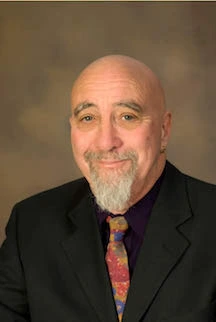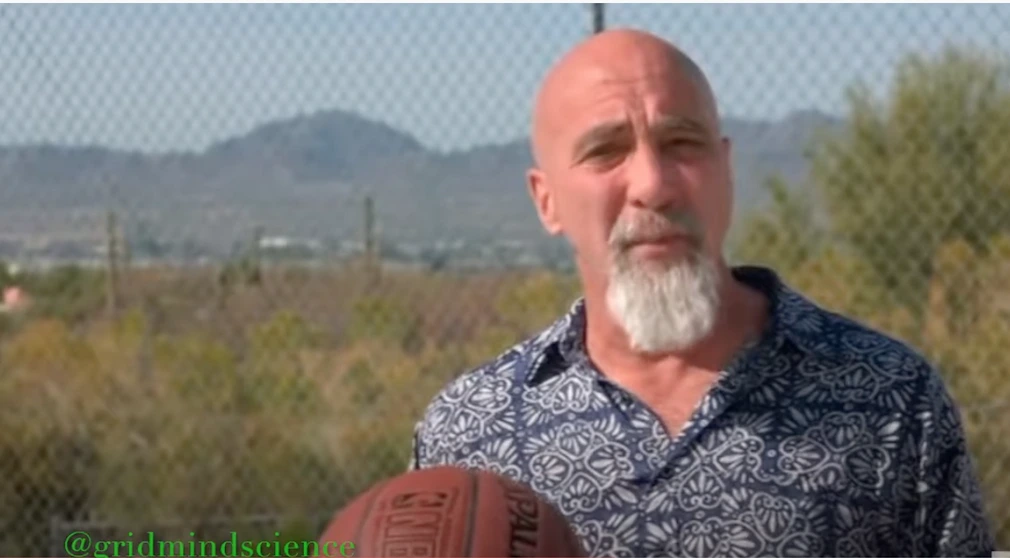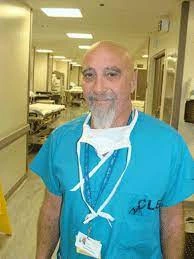Image

Stuart Hameroff, MD
Anesthesiologist, Quantum Consciousness Theorist and Researcher
Researcher into the nature of consciousness, the mechanism of anesthesia, and the quantum biology of microtubules
Professor Emeritus, Departments of Anesthesiology and Psychology Banner-University Medical Center. Director, The Center for Consciousness Studies,
Colleges of Medicine, Science, and Social and Behavioral Sciences, The University of Arizona, Tucson, Arizona
Document
Document
OVERVIEW
The nature of consciousness remains deeply mysterious and profoundly important, with existential, medical and spiritual implications. We know what it is like to be conscious – to have awareness, a conscious ‘mind’, but who, or what, are ‘we’ who know such things? How is the subjective nature of phenomenal experience – our ‘inner life’ - to be explained in scientific terms? What consciousness actually is, and how it comes about remain unknown.
The general assumption in modern science and philosophy is that consciousness emerges from complex computation among simple brain neurons, computation whose currency is usually seen as axonal firings (‘spikes’) and synaptic transmissions. These occur at the neuronal surface membrane level, and spikes are often equated with information ‘bits’ in digital computing. But this approach fails to account for phenomenal conscious experience, and relegates consciousness to epiphenomenal illusion, occurring too late for real-time conscious control of our seemingly conscious actions.
Rather than a computer of neurons, an alternative possibility is that the brain is a multi-scale hierarchy, with self-similar information patterns resonating, interfering and undergoing quantum state reductions across multiple fractal-like levels of scale, resulting in consciousness being more like music than computation.
When did consciousness arise? The brain-as-computer view presumes consciousness ‘emerged’ during biological evolution, perhaps fairly recently. On the other hand, spiritual and contemplative traditions, and scientists and philosophers embracing panpsychism, and the ‘Orch OR’ theory (see below) may consider consciousness to be intrinsic, somehow ‘woven into the fabric of the universe’, having existed all along in the fine scale structure of reality, fundamental spacetime geometry, and somehow accessible to conscious organisms. In the panpsychist/Orch OR views, conscious precursors and Platonic forms preceded life, possibly prompting its origin and driving its evolution.
CONSCIOUSNESS AND ORCH OR
I became interested in consciousness as an undergraduate, and in medical school in the early 1970s worked in a cancer lab and studied mitotic cell division. The precise separation of chromosomes and formation of dividing daughter cells were performed by mitotic spindles and centrioles, composed of self-organizing protein polymers called microtubules. Fascinated by their apparent intelligence and purposeful behavior, I wondered whether the microtubule polymer lattice processed information as a molecular computer, to organize cellular activities. If so, could this be somehow relevant to consciousness?
Following medical school I trained in anesthesiology at the University of Arizona, mentored by the department founding chairman Burnell Brown. He convinced me the best way to understand consciousness was to understand how anesthetic gases selectively block it, sparing non-conscious brain activities. In my academic career I’ve researched anesthetic action, microtubules and consciousness, as well as high frequency jet ventilation, chronic pain therapies, neuromuscular blockade, brain monitoring during anesthesia and transcranial ultrasound brain therapy. With engineer and physicist colleagues I developed models of microtubule information processing at deeper, higher capacity levels within neurons, and in the 1980s challenged mainstream ideas in neuroscience and artificial intelligence (‘AI’).
But one day someone said: “OK, there’s all this information processing in microtubules going on inside neurons. How would that explain consciousness?” I had to admit I didn’t know, but fortunately he suggested I read ‘The emperor’s new mind’ by Roger Penrose (1989), which I did.
In it, Roger proposed ‘objective reduction’, ‘OR’, self-collapse of quantum superposition due to spacetime geometry, as a solution for both the quantum measurement problem and the ‘hard problem’ of conscious experience. It was audacious and brilliant. He was suggesting a ‘quantum’ mechanism for consciousness connected to the fine scale structure of the universe, but needed a quantum computer in the brain able to modulate neuronal functions. To me, microtubules fit the bill perfectly, and Roger agreed when we met. In the mid 1990s we published the Penrose-Hameroff theory of ‘orchestrated objective reduction’ (‘Orch OR’) which suggests consciousness arises from quantum vibrations ‘orchestrated’ in microtubules inside brain neurons, orchestrated vibrations which are proposed to interfere, ‘collapse’ and resonate across scale, control neuronal firings, and generate consciousness.
Orch OR was viewed skeptically, as quantum technology requires extreme cold to avoid thermal decoherence. But evidence has now shown 1) functional quantum behavior in photosynthesis proteins in sunlight, 2) coherent vibrations in microtubules at ambient temperatures in a multiscale hierarchy spanning terahertz, gigahertz, megahertz, kilohertz and hertz frequencies, 3) anesthetic action on microtubules rather than membrane proteins.
Stuart Hameroff’s research pursued microtubule information processing and anesthetic action. In the mid-1990s he teamed with eminent British physicist and Nobel Laureate Sir Roger Penrose to develop a controversial quantum theory of consciousness (‘orchestrated objective reduction’, ‘Orch OR’) based on microtubule quantum computing. Harshly criticized initially, Orch OR is now supported by experimental results including anesthetic action. In 2017, with Sir Roger Penrose, James Tagg, Ivette Fuentes and Erik Viierre, Hameroff co-founded the Penrose Institute, intended to support research based on the various works of Sir Roger (cosmology, quantum mechanics, general relativity, black holes, geometry and consciousness).
TESTING ORCH OR
For Orch OR to be feasible, microtubules would need to sustain functional quantum states spatially and temporally. Microtubules are polymers of the protein tubulin, each of which has 86 ‘aromatic’ amino acid rings (tryptophan, phenylalanine and tyrosine) of delocalized ‘pi electron’ resonance clouds. These electron clouds form non-polar (water-aversive) regions inside tubulin which are friendly to quantum-optical effects like fluorescence, phosphorescence, van der Waals coupled dipole oscillations, delayed luminescence, and superradiance. These non-polar regions are also precisely where anesthetic gases bind and act by weak, quantum interactions to selectively block consciousness.
To test Orch OR we set out to 1) demonstrate quantum optical states in microtubules at physiological conditions. If demonstrated, we would then 2) test effects of general anesthetics upon the microtubule quantum optical states. Failure to find quantum effects in microtubules, or, if found, determination that they were not dampened by anesthetics, would effectively ‘falsify’ Orch OR (Hameroff, 2021).
With funding from the Templeton World Charity Foundation (‘TWCF’; $230,000 over 2 years) program in ‘Accelerating Research in Consciousness’, Stuart Hameroff and Sir Roger Penrose convened an experimental group including Jack Tuszynski (U Alberta), Greg Scholes and Aarat Kalra (Princeton), Aristide Dogariu (Central Florida), Travis Craddock (Nova SE), and M. Bruce MacIver (Stanford). Two sets of experiments were planned and have been performed over the past two years.
At Princeton, Greg Scholes and Aarat Kalra studied tryptophan fluorescence lifetimes (‘TFLs’) in tubulin, and microtubules. Laser-induced optical excitations propagate far further, and persist far longer through microtubules than expected. Two different anesthetics (etomidate, and isoflurane) both significantly alter TFL excitation time and distance in microtubules (Lewton, 2022).
In Aristide Dogariu’s lab at the University of Central Florida, brief pulses of blue light shown on microtubules and tubulin proteins resulted in apparent ‘light-trapping’, and then re-emission in a process called delayed luminescence (‘DL’), apparently mediated by quantum ‘superradiance’ (Celardo et al., 2019). Tubulin units re-emitted half the light after hundreds of milliseconds, and microtubules re-emitted after more than a second. The experiments were repeated with anesthetics etomidate and isoflurane, and also a structurally related anti-convulsant (but non-anesthetic) drug. Both anesthetics, but not the anti-convulsant shortened the DL/superradiance time.
Superradiance and other quantum optical effects in microtubules support Orch OR, and could be essential for consciousness. We are writing up both studies, and planning further experiments with anesthetics in the gas phase to look for reversibility in superradiance inhibition, and compare different anesthetic potencies with their known potencies in rendering humans and animals unconscious and unresponsive. If those sets of potencies match, superradiance in microtubules would be, at least, a presumptive correlate of consciousness.
A new paradigm in neuroscience
Increasing evidence suggests functional aspects of consciousness and cognition operate and extend in a scale-invariant hierarchy, both 1) upward from the level of neurons to larger and larger neuronal networks and networks of networks in the brain, but also 2) downward, inward, smaller, to deeper, faster quantum processes in cytoskeletal microtubules inside neurons.
For the past 9 years Anirban Bandyopadhyay’s group at National Institutes of Material Sciences, in Tsukuba, Japan has found excitation and resonance in microtubules in terahertz, gigahertz, megahertz, kilohertz and hertz frequency ranges. The excitations occur in self-similar patterns which repeat every ~3 orders of magnitude as ‘triplets of triplets’, i.e. three peaks, each composed of 3 peaks.
The biological quantum vibrations apparently originate in terahertz quantum (van der Waals) dipole oscillations in and among aromatic amino acid rings of tryptophan, phenylalanine and tyrosine within each tubulin. This is the medium in which anesthesia acts to prevent consciousness, possibly by dampening quantum terahertz dipole oscillations.
Anirban’s group has also shown that gigahertz and megahertz oscillations in dendritic-somatic microtubules regulate axonal firings, and have detected gigahertz and megahertz from the scalp within the EEG, with self-similar ‘triplet-of-triplet’ patterns.
The brain should be viewed as a scale-invariant hierarchy, with 15 orders of magnitude of activities critical to consciousness and cognition extending inward, deeper, faster into microtubules inside neurons. And further still to fundamental spacetime geometry, according to Penrose OR.
Medically, research into therapies for mental and cognitive disorders should include testbeds for quantum optical effects in microtubules.
-
Quantum optical pharmacology laboratory, testing effects of potential drug molecules on microtubule superradiance, quantum optics and electronic cloud dipoles. Also effects of ultrasound, and terahertz radiation. In addition to microtubules, we will study organic molecules including polyaromatic hydrocarbons, and other molecules from extraterrestrial sources through collaborations with Dante Lauretta.
-
CCS pioneered brain ultrasound therapy. When Anirban discovered megahertz and other frequencies in microtubules, I wondered whether ultrasound (megahertz mechanical vibrations) into the brain may be beneficial. It turned out to be safe and painless in reasonable exposure, and we performed and published the first clinical trial of transcranial ultrasound (TUS) on chronic pain and mood (Hameroff et al, 2013). I later worked with Jay Sanguinetti and John Allen in psychology on TUS (Sanguinetti et al, 2020), and hope to continue and expand clinical trials of TUS, e.g. for dementia, TBI, depression, anxiety, PTSD and addiction
Contact Information
Stuart R. Hameroff, MD | Professor Emeritus
University of Arizona, Department of Anesthesiology
Banner University Medical Center, Tucson
P.O Box 245114
1501 N Campbell Ave.
Tucson, Arizona USA
CENTER FOR CONSCIOUSNESS STUDIES
Abi Behar Montefiore
The Science of Consciousness Conferences – YouTube Channel
Stuart Hameroff Website (see Press Publications Podcasts)
additional links to Hameroff main website:
hameroff.com
quantum-consciousness.com
quantum-consciousness.org
quantum-mind.org
quantumconsciousness.org




